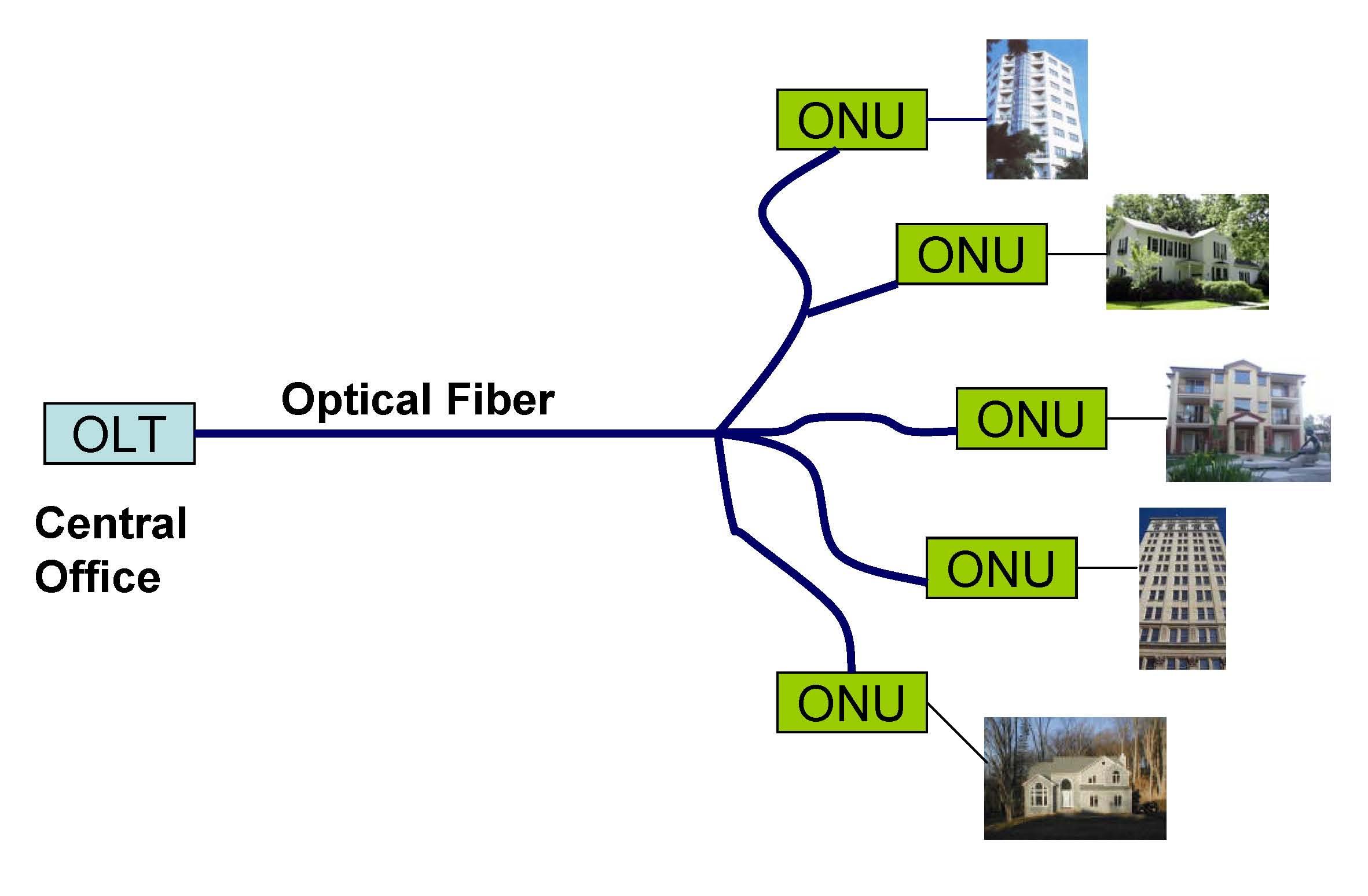A passive optical network (PON) is a fiber network that only uses fiber and passive components like fiber splitters and combiners. It starts from the optical line terminal (OLT) in the central office and ends at the optical network unit (ONU) at the customer’s home (as shown in the following figure). Today, we’ll talk about EPON vs GPON.

EPON vs GPON: What Are the Difference?
Ethernet passive optical network (EPON) and gigabit passive optical network (GPON) are two popular versions of PONs. The most dramatic distinction between EPON and GPON is a marked difference in architectural approach. EPON employs a single Layer 2 network that uses Internet Protocol (IP) to carry data, voice, and video. While GPON provides three Layer 2 networks: ATM for voice, Ethernet for data and proprietary encapsulation for voice. Moreover, they also vary from each other in terms of bandwidth, per-subscriber cost, efficiency, management system and encryption.
- Usable Bandwidth
EPON generally delivers 1 Gbit/s symmetrical bandwidth. And its Gigabit Ethernet service actually constitutes 1 Gbit/s of bandwidth for data and 250 Mbit/s of bandwidth for encoding. GPON, however, promises 1.25 Gbit/s or 2.5 Gbit/s downstream and upstream bandwidths scalable from 155 Mbit/s to 2.5 Gbit/s.
- Per-subscriber Costs
EPON lowers the costs of subscribers by allowing carriers to simplify their networks and to eliminate complex and expensive asynchronous transfer mode (ATM). While the costs of EPON equipment are approximately 10 percent of the costs of GPON equipment.
- Efficiency
According to the IEEE 802.3 protocol for Ethernet, data transmission occurs in variable-length packets of up to 1518 bytes in EPON. The use of variable-length packets makes Ethernet to carry IP traffic, which significantly reduces the overhead relative to ATM.
In GPON, data transmission occurs in fixed-length 53 byte cells as specified by the ATM protocol. This format makes it inefficient for GPON to carry traffic formatted according to IP, which calls for data to be segmented into variable-length packets of up to 65,535 bytes. This process is time-consuming and complicated.
- Management systems
EPON requires one single management system, which means EPON results in a significantly lower total cost of ownership. In addition, it does not require multi-protocol conversions, and the result is a lower cost of silicon. In GPON, there are three management systems for the three Layer protocols. Thus it is more expensive. Furthermore, GPON does not support multi-cast services. This makes support for IP video more bandwidth-consuming.
- Encryption
EPON uses an advanced encryption standard (AES) based mechanism, which is supported by multiple silicon vendors and deployed in the field. Furthermore, EPON encryption is both downstream and upstream. While the encryption in the GPON is part of the International Telecommunication Union (ITU) standard and GPON encryption is downstream only.
Conclusion
All in all, when EPON vs GPON, both have their advantages and disadvantages. It is hard to say which one will be prevailing. But one thing is clear: PON deployment will continue expanding. FS launches a series of integrated, high reliability and affordable EPON/GPON system solutions for its customers to meet the fast growing demand of PON deployment. In addition, network equipment like network switch, transceiver module also are available at FS.
Related Articles:
EPON SFP VS. GPON SFP: Cost-effective Solution for Access Network
PON vs. AON in FTTH Systems
